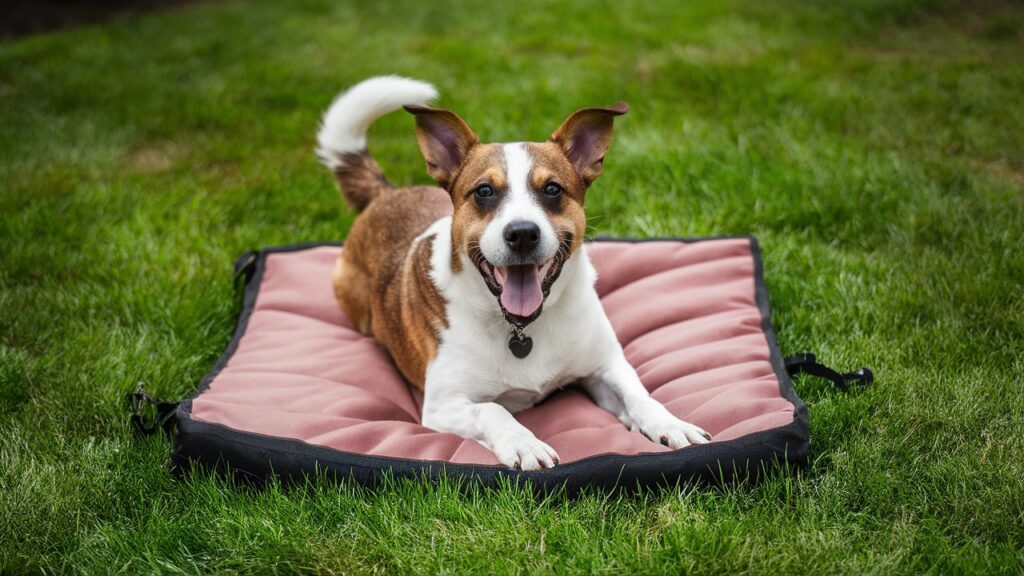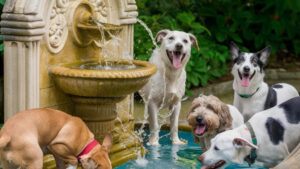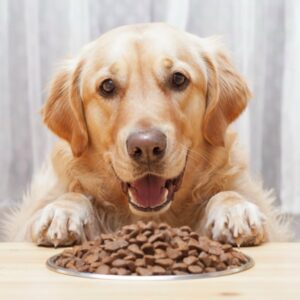Dog pads work by providing a convenient and absorbent surface for dogs to eliminate on. The pads are designed to quickly absorb urine and lock it away, preventing leaks and odors.
They are often scented to attract dogs and encourage them to use the pad. The absorbent material in the pads turns liquid into a gel, keeping the surface dry and making cleanup easy. Some pads also have a leak-proof backing to protect floors.
Using dog pads can be a helpful tool for potty training puppies, senior dogs, or dogs that cannot go outside due to certain circumstances.
Introduction To Dog Pads
Dog pads are absorbent sheets that capture urine, aiding in potty training by minimizing messes and accidents. Dogs learn to use them through scent and repetition, making them a convenient option for indoor potty needs.
| What Are Dog Pads? | The Basic Principle Behind Their Function |
| Dog pads are absorbent layers. | They are designed to retain moisture. |
| Used for potty training dogs. | Helpful for indoor situations. |
Dog pads serve as convenient tools for pet owners. They offer a solution for potty training dogs, especially in indoor settings. These absorbent layers are crafted to retain moisture effectively, making them suitable for training purposes. By familiarizing dogs with these pads and using cue words, pet owners can effectively guide their pets. The versatility of dog pads allows for customized usage based on individual needs and lifestyle preferences.
Choosing The Right Dog Pad
Dog pads are highly absorbent and come in various sizes, materials, and types. When choosing the right dog pad, consider the size of your dog and the absorbency level needed. Factors to consider include the pad’s durability, odor control, and leak-proof capabilities. Some pads are designed for indoor use, while others are suitable for outdoor or travel purposes. The different types available include disposable pads, washable pads, and artificial grass pads. Each type has its own benefits and drawbacks, so it’s essential to select the one that best suits your dog’s needs and your lifestyle. Training your dog to use pads involves consistency and positive reinforcement. By understanding how dog pads work and considering these factors, you can effectively potty train your dog and maintain a clean living environment.
The Science Of Absorption
How Do Dog Pads Work
The Science of Absorption
Materials Used
Dog pads are made with absorbent materials such as polymer gels that quickly turn liquids into gel, preventing leaks and keeping paws dry. These materials are odor neutralizers and can hold a significant amount of liquid, making them ideal for potty training and indoor use.
Training Your Dog To Use Pads
Teaching your dog to use pads involves familiarizing them with the pad and using a cue word to signal it’s time to go. Dog pads work by providing a convenient spot for your pet to relieve themselves, with easy cleanup and versatility to fit your pup’s needs and your lifestyle.
| To train your dog to use pads, familiarize them with the pad beforehand. Introduce cue words like “go potty” to signal potty time. Puppy pads can be a helpful training tool, especially for young dogs needing frequent potty breaks. Versatile and easy to clean, they can be used full-time or as needed. Leak-proof options prevent messes and tracking, making cleanup a breeze. Consistency and positive reinforcement are key to successful pad training. Monitor your dog’s progress and adjust training as needed for best results. |
The Pros And Cons Of Using Dog Pads
Dog pads are a convenient option for pet owners who live in apartments or have limited mobility. They provide a designated area for dogs to relieve themselves indoors. This can be especially helpful for puppies who are not yet fully vaccinated and cannot go outside. Additionally, dog pads are easy to clean up and can be a temporary solution for older dogs with incontinence issues. However, relying on dog pads can delay outdoor training and may lead to confusion for the dog when transitioning to outdoor potty habits. It’s important for pet owners to weigh the pros and cons and consider their individual circumstances before deciding to use dog pads.
Maintenance And Cleanup
Changing the Pads:
When it comes to changing the pads, it is important to do it regularly to maintain cleanliness. After your dog has done their business, remove the soiled pad immediately and replace it with a fresh one. Depending on how often your dog uses the pad, you may need to change it every few hours or once a day.
Dealing with Leaks and Spills:
If you notice any leaks or spills on the pad, it is important to clean it up as soon as possible to prevent any odors or stains. Use paper towels or a cloth to blot up the mess, then clean the area with a pet-safe cleaner. Make sure to let it dry completely before laying down a new pad.
Transitioning From Pads To Outdoor Potty
Transitioning from using pads to outdoor potty for your dog is a gradual process. Start by gradually moving the pads closer to the door and eventually outside. Use positive reinforcement to encourage outdoor potty use. This method helps your dog understand the transition and reinforces the outdoor potty behavior.

Common Questions Answered
Using dog pads can be a convenient solution for pet owners, but it’s natural to have questions about their effectiveness and impact on your dog’s behavior. Many pet owners wonder if using pads will confuse their dogs and how often they need to be changed.
Do Pads Confuse Dogs?
Introducing your dog to the pads and using a cue word or phrase can help familiarize them with the designated potty area. This can prevent confusion and encourage proper use of the pads.
The frequency of pad changes depends on your dog’s usage and the pad’s absorption capacity. Regular monitoring and timely changes are essential to maintain cleanliness and hygiene.
Frequently Asked Questions
How Do Dogs Know To Pee On Pee Pads?
Dogs know to pee on pee pads through familiarization and cue words like “go potty” to signal them.
Are Dog Pee Pads A Good Idea?
Dog pee pads can be a useful tool for potty training, particularly for puppies who need to go frequently. They’re easy to maintain and can be used part-time or full-time depending on your pup’s needs and your lifestyle. Look for leak-proof pads with super absorbent gel to keep the area dry and prevent tracking.
Do You Throw Away A Pee Pad After One Use?
Yes, you should throw away a pee pad after one use. Pee pads are designed to absorb and contain urine, so they become soiled and unsanitary after use. It is important to dispose of them properly to maintain cleanliness and hygiene.
Do Pee Pads Soak Through?
Pee pads are designed with a leak-proof plastic liner to prevent urine from soaking through and leaking onto the floor. Some versions have super absorbent properties, turning liquid into a quick-drying gel to keep the pad dry. This gel also helps prevent tracking from your dog’s paws.
Pee pads are a convenient aid for potty training and can be easily replaced after use.
Conclusion
Dog pads are a convenient and effective solution for potty training your furry friend. By familiarizing your puppy with the pads and using cue words or phrases, you can establish a routine for them to go wee. Dog pads are also versatile and easy to maintain, making them a practical choice for both full-time and part-time use.
With their absorbent properties and leak-proof liners, dog pads ensure a clean and dry environment for your pup. Say goodbye to accidents and hello to successful potty training with dog pads!








